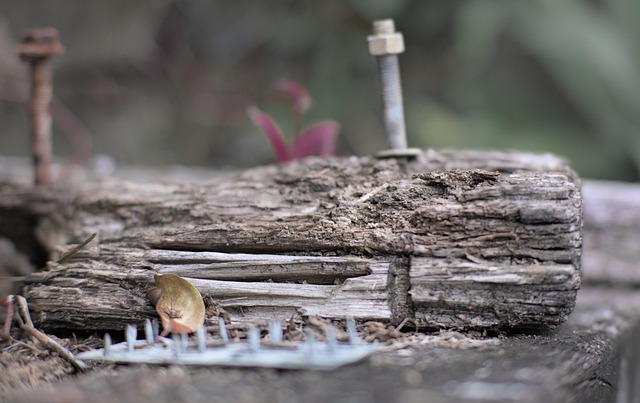Termite damage, often undetected until severe, requires early intervention for structural integrity. Eco-friendly termite solutions emphasize prevention and non-toxic methods using natural substances like citrus oils, garlic, neem oil, nematodes, and fungi to control infestations without harming the environment. Comprehensive assessments by professionals utilize advanced tools and sampling techniques to accurately identify damage. Restoring and preventing termite damage involves baiting systems, repairing structural issues, ensuring proper drainage, removing decaying wood, and regular professional inspections every few months.
“Uncover the insidious signs of termite damage and learn how comprehensive assessments are your first line of defense. This guide delves into the intricate world of termite infestations, offering a detailed look at both traditional and eco-friendly termite solutions. From identifying subtle indicators to understanding the latest restoration techniques, we equip you with the knowledge to navigate this complex issue effectively. Discover practical steps for prevention and restoration, ensuring your property remains protected against these persistent pests, all while exploring the benefits of eco-friendly termite control methods.”
Understanding Termite Damage: Signs and Scope
Termite damage can often go unnoticed until it becomes severe, making early detection crucial. Understanding the signs and scope of this destruction is essential for homeowners and property managers alike. Termites feed on cellulose-rich materials, which means wood and paper products are their primary targets. They quietly chew through structural elements, insulation, and even painted walls, leaving behind a trail of destruction that may not be readily apparent.
Common signs include noticeable holes in wood, weakened or bulging walls, floors that feel soft or uneven, and peeling paint. In severe cases, you might see visible tunnels or debris resembling sawdust. The presence of these indicators requires immediate attention as termites can cause significant structural damage over time. Eco-friendly termite solutions, focusing on prevention and non-toxic methods, offer a sustainable approach to dealing with this pervasive pest without compromising the integrity of your home or the environment.
The Role of Eco-Friendly Solutions in Termite Control
In the ongoing battle against termites, there’s a growing emphasis on adopting eco-friendly termite solutions as an effective and sustainable approach to control these pests. Traditional methods often rely heavily on synthetic chemicals, which can have detrimental effects on both the environment and human health. In contrast, eco-friendly solutions offer a safer, greener alternative by utilizing natural substances and non-toxic techniques. These methods not only minimize environmental pollution but also promote biodiversity by avoiding harmful chemicals that might disrupt ecosystems.
One prominent eco-friendly termite solution involves the strategic use of beneficial insects, such as certain species of nematodes and fungi. Nematodes can infect and kill termites, while specific fungi act as natural predators, providing a biological control method. Additionally, natural repellents like citrus oils, garlic, and neem oil have proven effective in deterring termites due to their strong scents and chemical properties. Integrating these eco-friendly termite solutions into restoration efforts ensures that buildings are protected without compromising the well-being of the surrounding environment.
Comprehensive Assessment: Tools and Techniques
Comprehensive assessments are a crucial step in identifying and mitigating termite damage, especially when considering eco-friendly termite solutions. Professionals employ a range of tools and techniques to thoroughly inspect structures. These include moisture meters to detect humid areas, where termites are often found, and thermal imaging cameras that visualize hidden infestations by detecting body heat. Additionally, experts use borate or termiticide treatments to uncover hidden activity by reacting with cellulose in wood, revealing termite tunnels.
During the assessment, sampling of suspected areas is done using non-destructive methods like nail pull tests and wood screw sampling to collect samples for lab analysis. This comprehensive approach ensures that every inch of a structure is scrutinized, providing an accurate picture of the extent of termite damage and guiding restoration efforts towards effective eco-friendly termite solutions.
Restoration and Prevention: A Step-by-Step Guide
Restoration and Prevention: A Step-by-Step Guide
After identifying termite damage, the first step is to assess the extent of the infestation. This involves thoroughly inspecting your property, focusing on areas where termites are most likely to gather, such as wooden structures, foundations, and basement areas. Once the damage is mapped out, it’s time to implement eco-friendly termite solutions. Opt for non-toxic treatments like baiting systems or natural repellents to avoid harmful chemicals.
The next step is to remove any sources of wood-to-soil contact, as termites thrive in such environments. This can be achieved by repairing structural issues, ensuring proper drainage around your home, and removing any decaying wood. Regular inspections are key to preventing future infestations; schedule professional checks every few months and stay vigilant for early signs of termite activity. By combining these measures with eco-friendly solutions, you can effectively restore damaged areas and safeguard your property from these persistent pests.
In light of the above discussions, comprehensive termite damage assessments are key to effective restoration and prevention. By understanding the signs of termite damage, leveraging eco-friendly termite solutions, and following a structured step-by-step guide for restoration, homeowners can protect their properties and avoid costly repairs. Remember that proactive measures, combined with advanced tools and techniques, are essential in navigating the challenges posed by termites and fostering a durable, healthy living environment.
